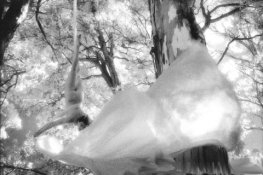holmburgers
Member
This is a discussion minded thread, and I'd like to hear from those who have done work of this scale, or know what it takes.
I saw some prints of photographs by Hew Locke the other day, and they nearly blew my mind. They were 7.5 feet x 6 feet chromogenic prints that looked absolutely stunning. Sharpness for miles, grainless, and enormous.
Dead Link Removed
Dead Link Removed
(to say that these online images don't do the prints justice seems like a silly thing to have to say...)
If you go to his website, you can see the whole film w/o cropping. Apparently he used Kodak 100T & the shadows from the film holder tell me it was 4x5"; do you agree?
How do you process a print this large? Does it take a top-notch lens to do it, and how long of an exposure does this kind of thing usually take? How much would it cost? I figured only 8x10" could do this, but apparently I underestimated 4x5".
It really just goes to show what film is capable of. By taking photographs on a sizable film you have captured enough visual information to reproduce life size images that look nearly perfect upon the closest inspection.
Anyways, I was just ecstatic to see these (among many other amazing prints at the Kemper Museum of Contemporary Art) and further pleased to see that they were chromogenic prints.
Thanks for your input,
I saw some prints of photographs by Hew Locke the other day, and they nearly blew my mind. They were 7.5 feet x 6 feet chromogenic prints that looked absolutely stunning. Sharpness for miles, grainless, and enormous.
Dead Link Removed
Dead Link Removed
(to say that these online images don't do the prints justice seems like a silly thing to have to say...)
If you go to his website, you can see the whole film w/o cropping. Apparently he used Kodak 100T & the shadows from the film holder tell me it was 4x5"; do you agree?
How do you process a print this large? Does it take a top-notch lens to do it, and how long of an exposure does this kind of thing usually take? How much would it cost? I figured only 8x10" could do this, but apparently I underestimated 4x5".
It really just goes to show what film is capable of. By taking photographs on a sizable film you have captured enough visual information to reproduce life size images that look nearly perfect upon the closest inspection.
Anyways, I was just ecstatic to see these (among many other amazing prints at the Kemper Museum of Contemporary Art) and further pleased to see that they were chromogenic prints.
Thanks for your input,









 There are electrical blankets (used in beds) that could be used underneath for heating, maybe use them as a thermal element connected to a PID thermostat? Jeezus, I'm full of ideas.
There are electrical blankets (used in beds) that could be used underneath for heating, maybe use them as a thermal element connected to a PID thermostat? Jeezus, I'm full of ideas.


 Well, hopefully nothing. If someone knows for sure my paranoia with toxicity of the colour chemicals in open trays is nothing, tell me.
Well, hopefully nothing. If someone knows for sure my paranoia with toxicity of the colour chemicals in open trays is nothing, tell me. 